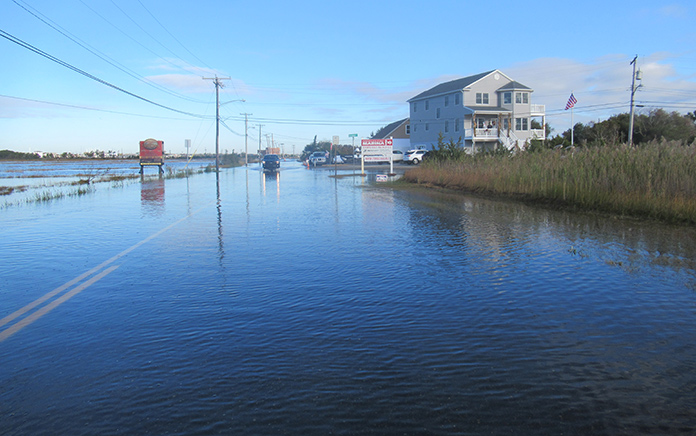
BERKELEY – The township is looking into federal funding to elevate a number of roads to prevent the flooding that seems to be happening more and more every year.
It used to be that only low-lying areas would flood consistently. Locals tried to avoid these spots, but the people living on these roads would be inconvenienced every time there was a heavy rain. Some areas are close to the Toms River or the Barnegat Bay, so they were prone to flooding from high tides.
The town would respond by fixing problem spots when they could, but the flooding has become so common that perhaps a larger solution is needed.
One particular area of contention is Bayview Avenue, Councilman James Byrnes said. The long road is surrounded by marsh and it floods frequently.
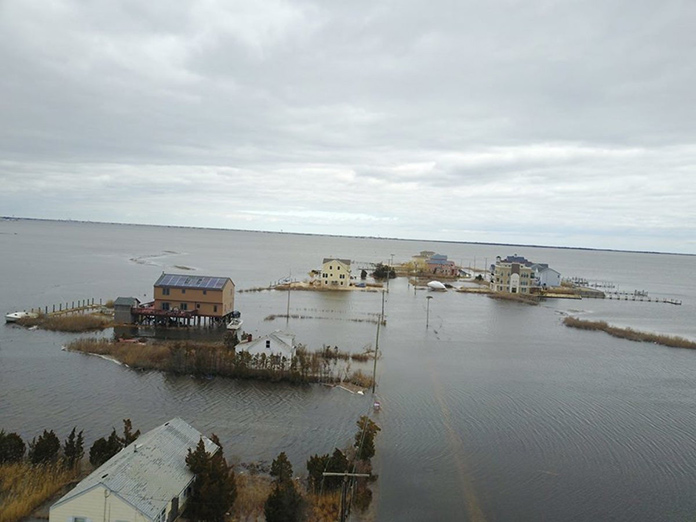
“Every time it rains, we put a barricade up and we lose an emergency route,” he said. This could compound issues. If a hurricane causes an evacuation, one of the main roads becomes flooded.
He spoke to one of the congressmen that serves Berkeley, Representative Jeff Van Drew (R-2nd), who told him that if Berkeley put a plan together, he would look for funding.
“It could be a $100 million project,” Byrnes said. That’s why it would be a federal cost rather than anything funded locally.
Byrnes also said that County Commissioner Gary Quinn, a former mayor of Lacey, said his town might partner on it.
Berkeley benefits from a volunteer Waterways Advisory Commission whose members inform the governing body on such things as if the lagoons are navigable. They have compiled an extensive report on the flooding. It’s co-chair, William McGrath, is a professional surveyor.
The group took an inventory of the tides and the flooding at 14 critical sites throughout town, McGrath said. They studied the elevations of the roadways, and numbers of times a year it floods. These were considered sunny day flooding, meaning that the primary source of the water was the tides. In some cases, the secondary cause was rainwater because it had rained more than a day ago but the water had nowhere to go.
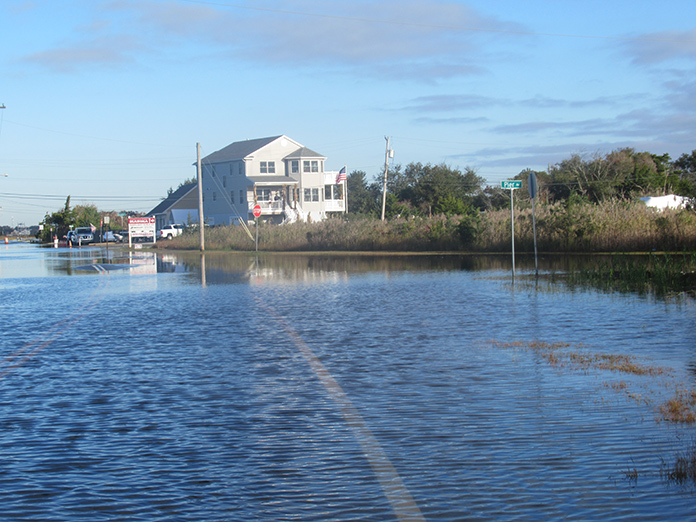
Key locations included (starting with the lowest elevation): Bayview and Pier avenues; Balsam Drive; Eugene Furey Boulevard and Bayview Avenue; Harbor Court; Dorrance Drive and Bayview Avenue; Sloop Creek Road and Bayview Avenue; Bay Boulevard; Avalon and Riviera avenues; the end of Evergreen Drive; Good Luck Drive; Main Street; Leach Court; North Bay and Longview drives; the end of Teakwood Drive; as well as Moorage Avenue and Veeder Lane.
There are a few factors entering into the study. The first is that the sea levels are rising, he said. The second is that the land is sinking.
How is the land sinking? Because we take groundwater out of it to drink, wash cars, and water the lawn. When we pump water out of the aquifer deep underground, it impacts the land above. That water isn’t being replaced, and the ground starts to sink, he said.
The land is sinking about 1 mm a year, McGrath said. This doesn’t sound like a lot, but compounded with the water level rising, there is a serious issue.
“What we do know is that the sea level is rising, and we know how much in the last 100 years,” he said.
There are tide level gauges throughout the state that measure the tides every six minutes. One of them is between B2’s Bistro and the old AT&T building, he said.
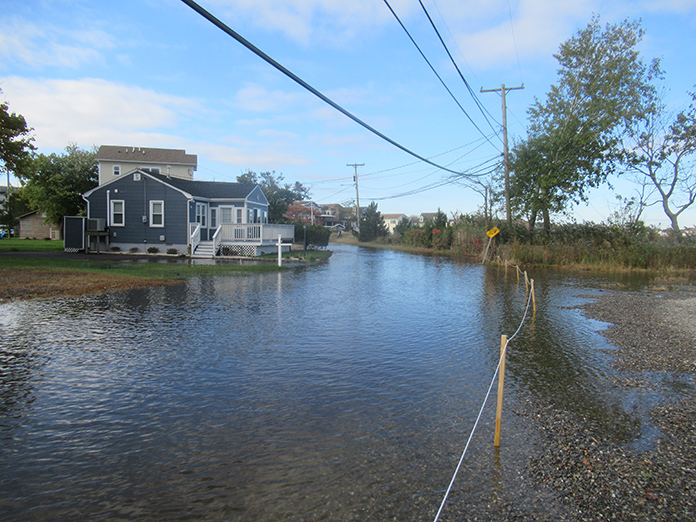
Other data includes police records – how often are they called out to respond to flooding?
Putting all this objective information together proves that there’s a problem.
They quoted a Rutgers study, which projected a rise in sea levels at the Jersey shore between 2.5 and 5 feet by 2100.
“We have actual measurement documentation over a very long period of time for sea level rise and land subsidence (sinking of land) due to potable water extraction. Further vulnerability to future coastal storms like Sandy looms in our future. In decades to come, the sites on this inventory will become totally impassible. Some of the sites are along emergency evacuation routes which will have to be addressed. Proactive and coordinated efforts for long term resiliency planning will have to occur in order to protect Berkeley Township’s residential assets and infrastructure,” the study concluded.
Township engineer John LeCompte said he’d look at McGrath’s report and attach costs to each project. Then, as funding is made available, it can be applied.
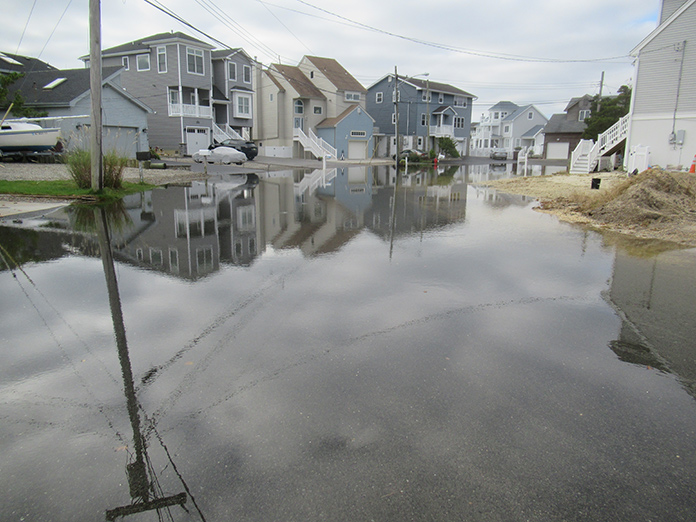
Jennifer Walker, Postdoctoral Associate of the Department of Earth and Planetary Sciences at Rutgers University, was interviewed about sea level rise and ground sinking by this newspaper in 2022. She also agreed that water coming from the aquifers has lowered the ground. Furthermore, she said that New Jersey sat at the southern terminus of the ice sheet that covered our region during the last ice age. This is why the ground has been settling for thousands of years.
“As you’re pulling more water out of the ground, you’re now creating more space in the land and the sediment compacts,” explains Walker, “and you get sinking that way, as well.”
Walker also said that the melting of glaciers and ice sheets contributes to the sea level rise. Carbon dioxide levels increase, which drives up temperatures, melting ice faster. The increased temperatures also makes the water expand, taking up more room. Ice is very reflective, and as it melts, it exposes land, which is darker – which then absorbs more heat – thereby accelerating the process.
But that’s only part of the problem. There are areas of the world where the ice acts like a cork, holding other greenhouse gases like methane trapped beneath its surface. With that cork gone, the methane is free to enter the atmosphere, where it adds to the ever-increasing mixture of man-made greenhouse gases from the burning of fossil fuels, once again accelerating the process.
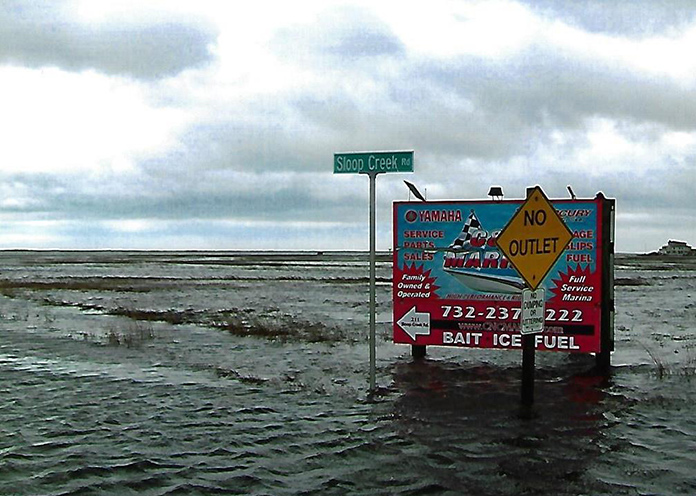
“It all comes back to reducing greenhouse gas emissions if we want to slow the trend,” warns Walker. “So obviously the top priority should be reducing fossil fuels, [and] reducing greenhouse gases to minimize the future impacts.”
Mark Bator contributed to this article.







